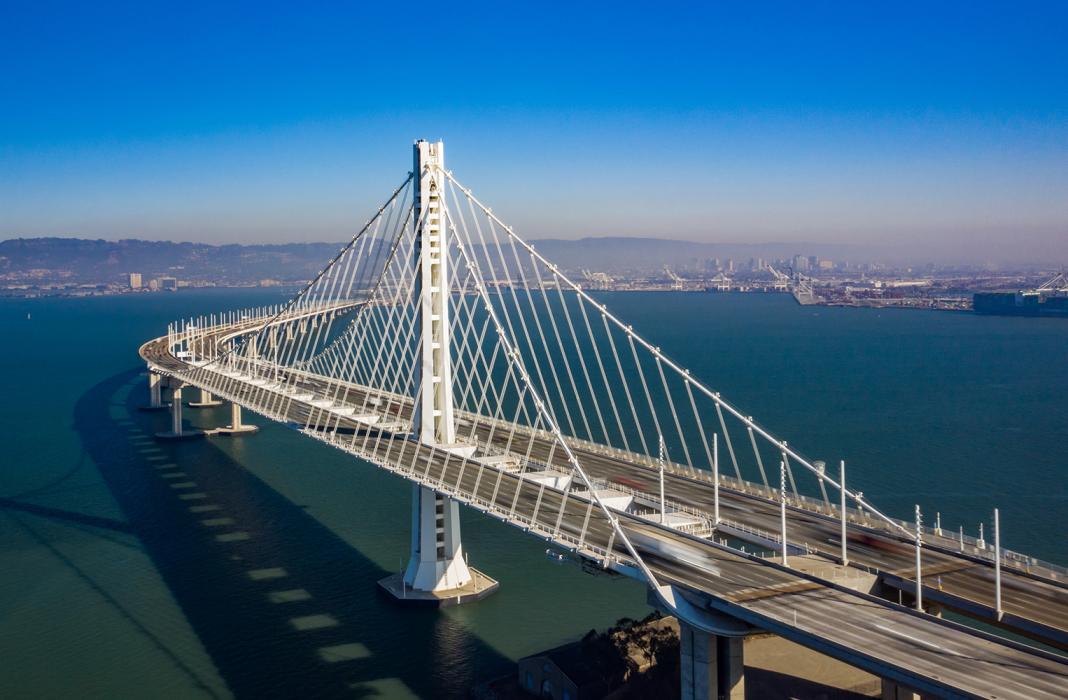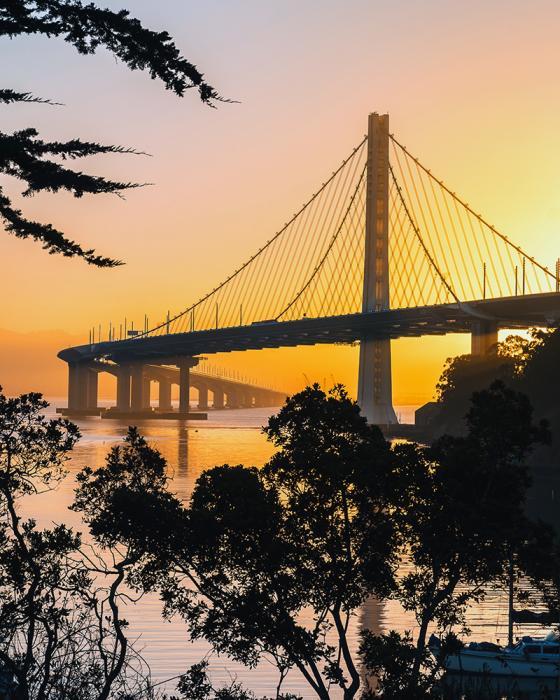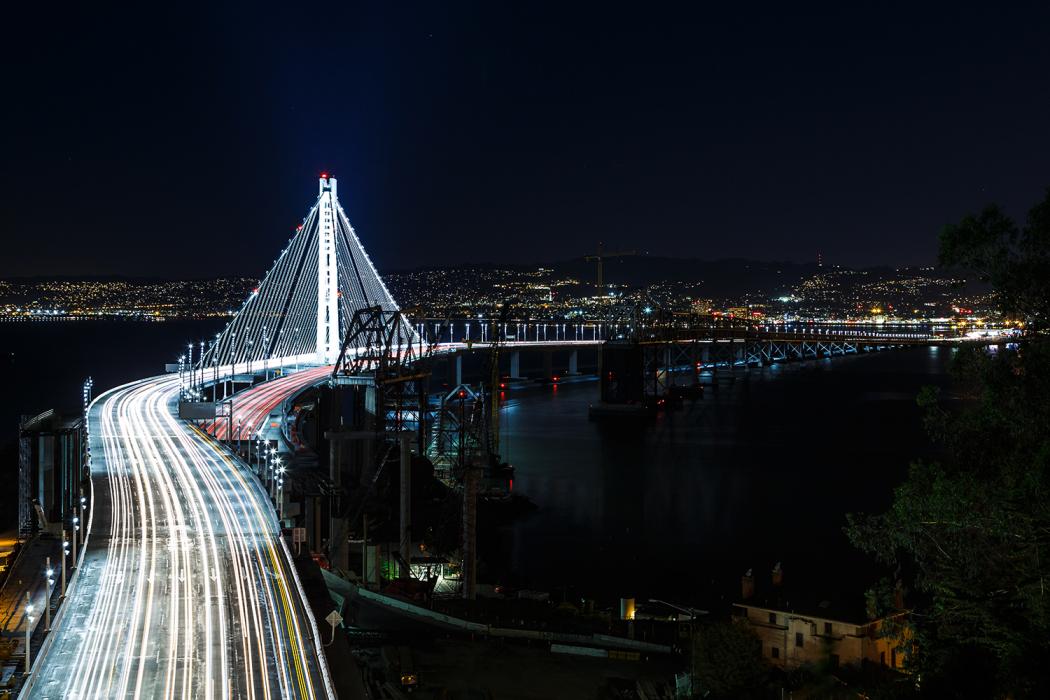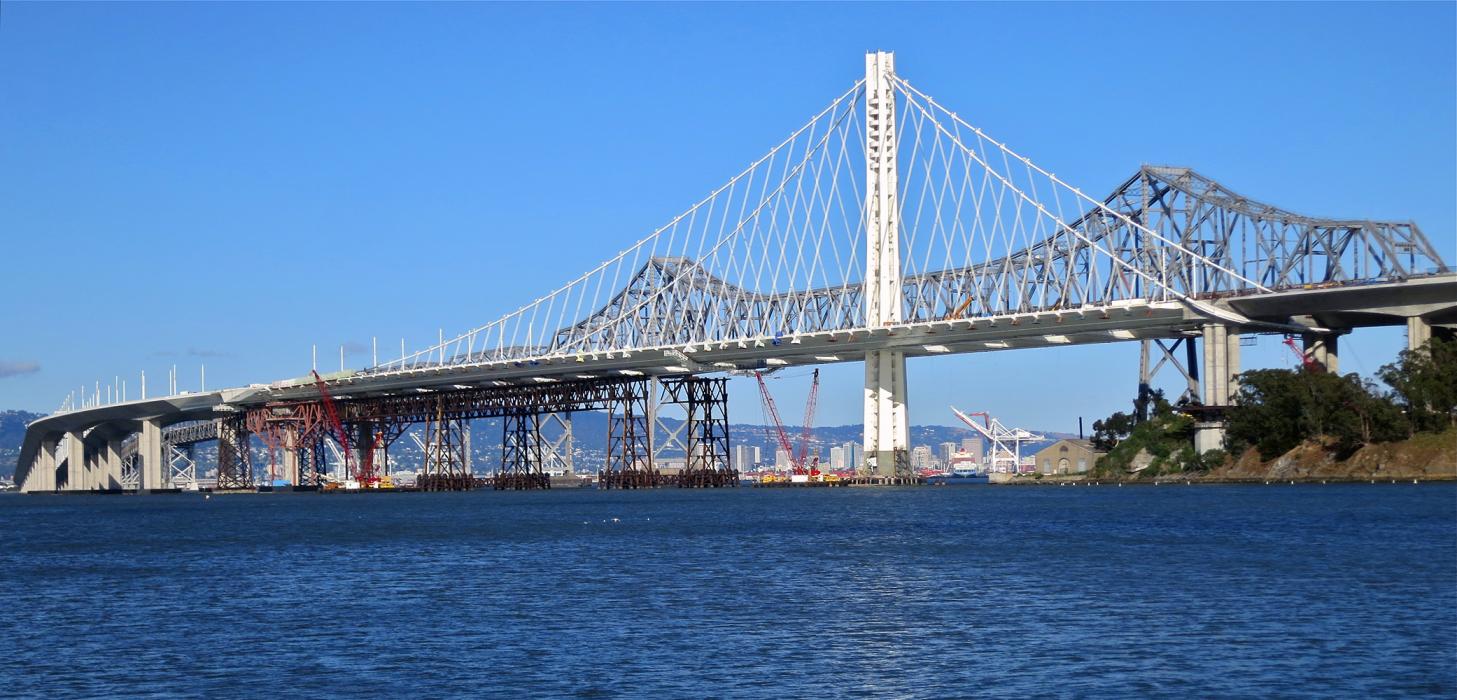San Francisco - Oakland Bay Bridge
The new east span of the San Francisco-Oakland Bay Bridge was named the world’s longest self-anchored suspension bridge when it opened to traffic in September 2013.
Project Details
IABSE, Outstanding Structure Award, 2015
ACEC-CA, Golden State Award, 2015
SEAOC, Award of Excellence - Infrastructure, 2014
NCSEA, Excellence in Structural Engineering Award, 2014
Caltrans, Excellence in Transportation Award - Major Structures, 2014
ASCE, Project of the Year Award - Region 9, 2013
ASCE, Outstanding Transportation Project Award - San Francisco Section, 2013
A crucial transportation link between two of California’s largest cities
The new east span of the San Francisco-Oakland Bay Bridge was named the world’s longest self-anchored suspension bridge when it opened to traffic in September 2013. It was also was the largest public construction contract in California’s history and one of the most challenging ever undertaken in the United States.
The bridge connects Yerba Buena Island and the viaduct to Oakland, replacing a cantilever bridge that was damaged in the 1989 Loma Prieta earthquake. It accommodates approximately 260,000 vehicles a day.
We provided bridge design services as a part of the joint venture team led by T.Y. Lin International for the 1,263-foot-span bridge.
Highlights
- A single 300-foot-high pylon tower stands between two five-lane roadways; the two main cables and wire rope suspenders drape from the tower and slant over the roadways to connect to their outer deck edges.
- Anchoring the cables into the roadway deck solved the problem of the bay mud, a soft silty clay that cannot support the concrete anchorages of most suspension bridges.
- The new bridge was designed to withstand a magnitude-7.25 earthquake on the Hayward Fault and magnitude-8+ earthquake on the San Andreas Fault.
- A major challenge was the need to complete the structure before another major earthquake occurs, while maintaining traffic during construction.





